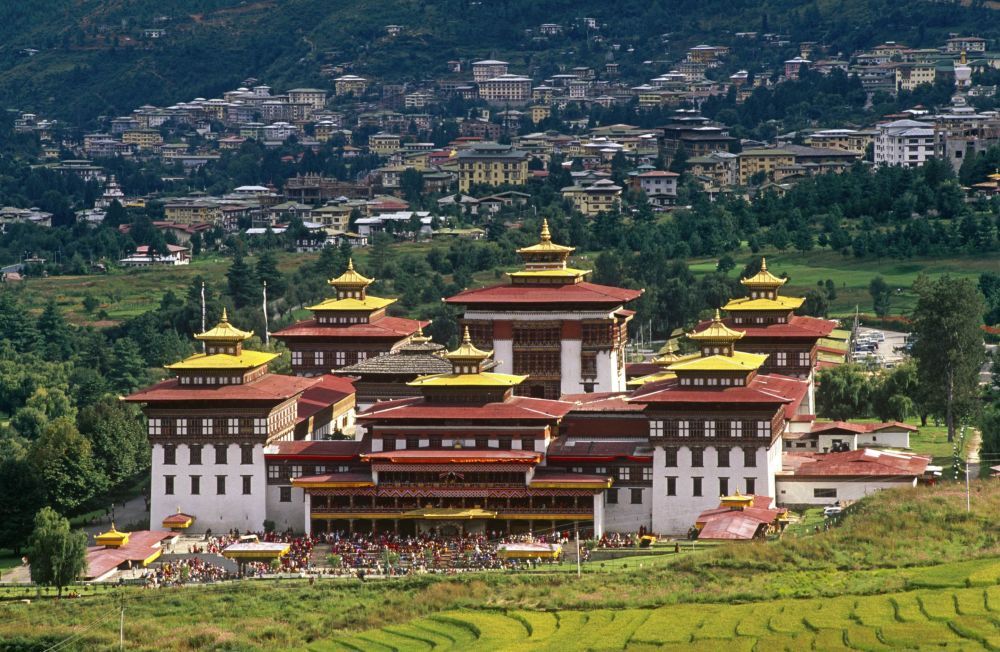

Trashi Chho Dzong, often referred to as the 'fortress of the glorious religion', is not only a significant administrative building housing the throne room and offices of the King of Bhutan but also a revered religious center that is home to the central monastic body. Sitting on the western bank of the Wang Chu river, its impressive architecture and strategic location have made this dzong a focal point of tourism in Thimphu, Bhutan.
The history of Trashi Chho Dzong is integral to Bhutan's past. Initially built in the 13th century by Lama Gyalwa Lhanangpa, it was later taken over by Zhabdrung Ngawang Namgyal, who expanded it in 1641, and throughout the centuries it has been destroyed by fire and earthquake, only to be rebuilt each time. The present dzong is the result of the 1960s reconstruction by the third King of Bhutan, Jigme Dorji Wangchuck, after a fire devastated the original structure. This reconstruction is noted for merging traditional Bhutanese architecture with modern needs, making it one of the most beautiful and iconic dzongs in Bhutan.
The era of tourism in Bhutan began in 1974, coinciding with the coronation of King Jigme Singye Wangchuck. During this period, the Bhutanese government cautiously opened its borders to foreign visitors, recognizing the need to introduce Bhutanese culture and heritage to the world while preserving its integrity. Trashi Chho Dzong quickly rose as one of the key attractions for its grandeur and the fact that it stages the vibrant and colorful Tsechu festival each year, which has grown to be an international event attracting tourists from around the globe.
In the present day, tourism in Trashi Chho Dzong, as in the rest of Bhutan, is carefully managed under the policy of 'High Value, Low Impact' to avoid the adverse effects of mass tourism. Visitors can enjoy guided tours that provide insights into the dzong's rich history, architecture, and spiritual significance. The aforementioned Tsechu festival continues to be the peak time for visiting, where masked dances and cultural performances provide a window into the soul of Bhutanese culture.
The latest trend is the increasing interest in spiritual and wellness tourism; visitors are attracted to the dzong not just for its historical and cultural significance but also as a place for meditation and reflection. Moreover, Bhutan's push towards sustainable travel experiences has seen the introduction of environmentally friendly practices and tourism that supports local communities, reinforcing the kingdom's reputation as a top global eco-tourism destination.
Overall, Trashi Chho Dzong continues to rise as a pillar of Thimphu's tourism, enchanting visitors with its majesty and the peace it symbolizes, all while promoting a sustainable approach that promises to preserve its beauty for generations to come.